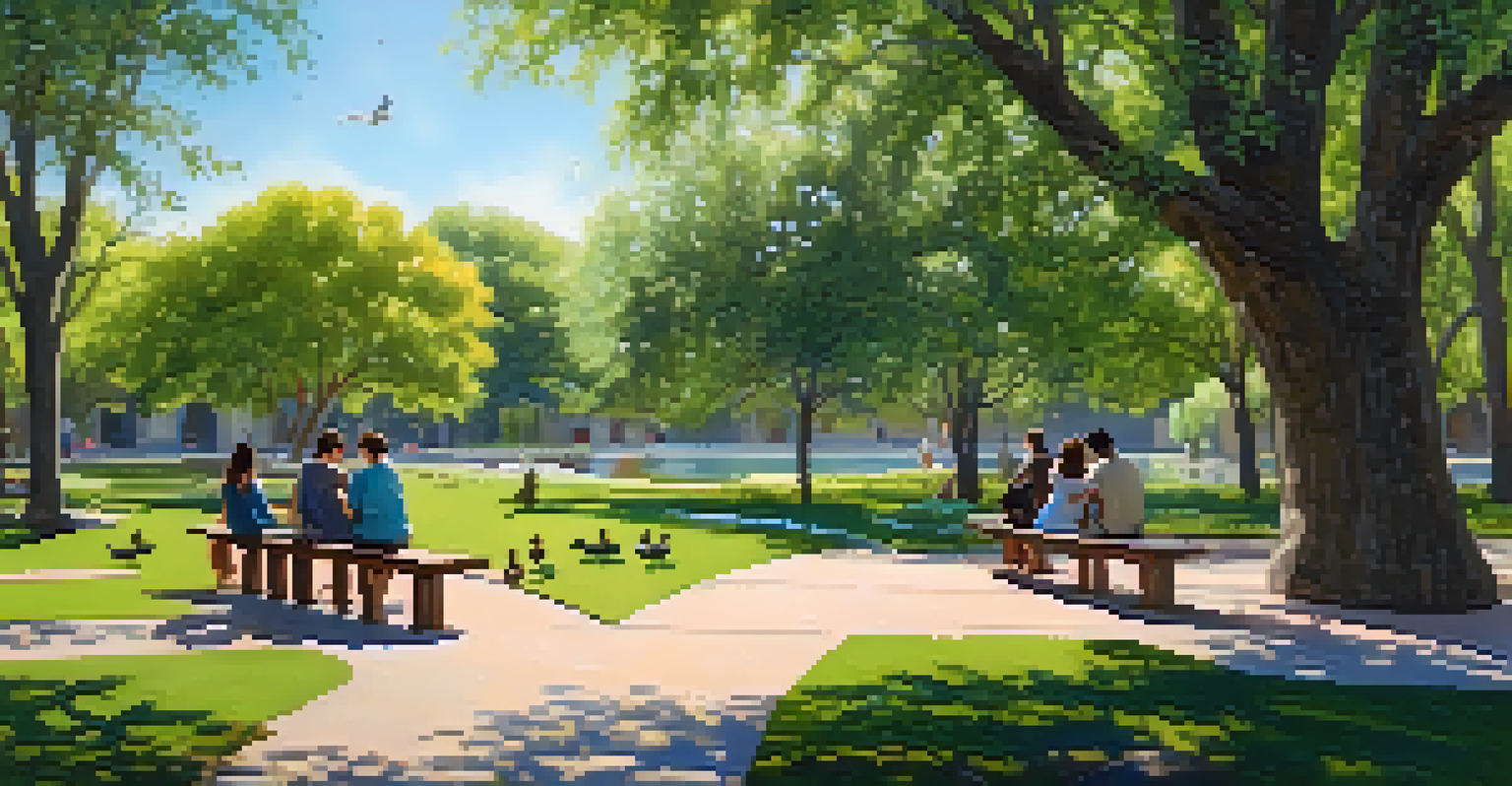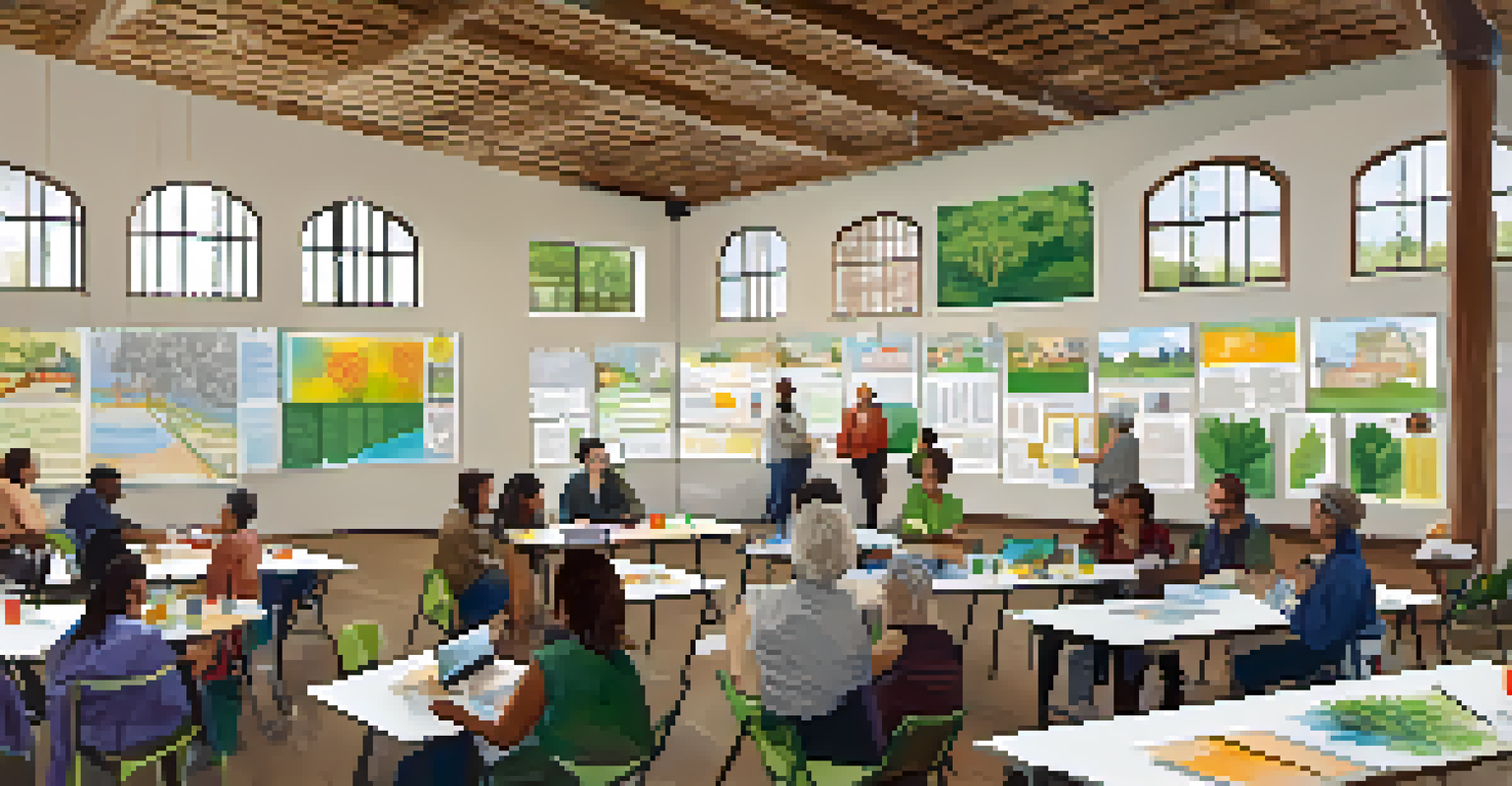Advocacy for Green Spaces in Arizona's Low-Income Areas

Understanding the Importance of Green Spaces
Green spaces are essential for community health and well-being. They provide a refuge where people can relax, exercise, and connect with nature. In urban environments, especially in low-income areas, these spaces can significantly enhance quality of life.
Green spaces are not just a luxury; they are essential for our health and well-being.
Moreover, green spaces contribute to environmental benefits, such as improving air quality and reducing urban heat. They also promote biodiversity by supporting various plant and animal species. Communities that prioritize green spaces often experience lower crime rates and higher property values.
In Arizona, where temperatures can soar, having access to green areas is crucial for residents’ physical and mental health. The lack of such spaces in low-income neighborhoods can exacerbate existing health disparities, making advocacy for green spaces even more pressing.
Current State of Green Spaces in Arizona
Arizona boasts a rich tapestry of landscapes, but many low-income neighborhoods struggle with limited access to green spaces. This disparity often stems from historical urban planning decisions that prioritized development over community needs. As a result, these areas frequently lack parks, gardens, and recreational facilities.

Many residents in these neighborhoods may not realize the benefits that green spaces can provide, from physical activity to social interaction. The absence of parks can lead to isolation and reduced opportunities for community engagement, which are vital for social cohesion.
Green Spaces Improve Community Health
Access to green spaces enhances physical and mental well-being, especially in low-income neighborhoods.
Identifying the existing gaps in green space accessibility is crucial for effective advocacy. By mapping out these areas, advocates can better illustrate the need for change and mobilize support from community members and local governments.
The Benefits of Green Spaces for Low-Income Families
Green spaces offer numerous benefits for low-income families, particularly in terms of health and well-being. Access to parks encourages physical activity, helping combat obesity and related health issues. Children benefit greatly from outdoor play, which fosters creativity and social skills.
In every walk with nature, one receives far more than he seeks.
Moreover, green spaces can serve as communal gathering spots where families can come together, building a sense of community. Shared experiences in these environments help strengthen relationships among neighbors and create a supportive network.
Additionally, green spaces can provide educational opportunities—such as community gardens—that teach families about sustainability, nutrition, and environmental stewardship. These initiatives empower residents and enhance their connection to nature.
Successful Green Space Initiatives in Arizona
Several initiatives in Arizona have successfully developed green spaces in low-income areas, showcasing the positive impact such projects can have. For instance, the City of Phoenix has launched community gardens that allow residents to grow their own produce, fostering food security and community engagement.
Another notable project is the establishment of the Rio Salado Habitat Restoration Area, which has transformed a neglected area into a vibrant ecosystem. This project not only provided recreational opportunities but also restored native habitats and improved water quality.
Successful Initiatives Boost Advocacy
Arizona's community gardens and habitat restoration projects demonstrate the potential of green spaces to foster community engagement and environmental benefits.
These successes demonstrate that with proper planning and community involvement, it's possible to create green spaces that benefit everyone. They serve as inspiring examples for other low-income neighborhoods seeking to advocate for similar initiatives.
Challenges in Advocating for Green Spaces
Advocating for green spaces in low-income areas is not without its challenges. Limited funding and resources often hinder the development of parks and recreational facilities. Additionally, bureaucratic hurdles can slow down the approval process for new green projects.
Moreover, some community members may be skeptical about the benefits of green spaces, especially if they've been neglected in the past. Building trust and demonstrating the value of these spaces is essential for garnering support.
Advocates must also navigate competing priorities, such as affordable housing and job creation. Balancing these needs while ensuring green spaces are included in community planning requires persistent efforts and collaboration.
The Role of Community Engagement in Advocacy
Community engagement is vital for successful advocacy for green spaces. Residents must be involved in the planning process to ensure the spaces reflect their needs and desires. By organizing workshops and forums, advocates can gather input and foster a sense of ownership among community members.
Additionally, engaging local schools and organizations can amplify the message and build a coalition of support. Collaborative efforts can lead to stronger advocacy campaigns that resonate with both residents and decision-makers.
Community Engagement is Essential
Involving residents in the planning of green spaces fosters ownership and support for advocacy efforts.
Furthermore, sharing success stories from other neighborhoods can inspire and motivate residents to take action. When people see what’s possible, they’re more likely to rally behind the cause and participate in advocacy efforts.
Moving Forward: Strategies for Successful Advocacy
To effectively advocate for green spaces in Arizona's low-income areas, it's essential to develop a comprehensive strategy. This includes building partnerships with local governments, nonprofits, and community organizations that share similar goals. Together, they can pool resources and expertise to create impactful initiatives.
Another critical strategy is to leverage social media and online platforms for awareness and mobilization. By sharing stories, data, and updates, advocates can reach a wider audience and encourage community involvement.

Finally, persistence is key. Advocacy for green spaces is a long-term endeavor, and it requires dedication and resilience from all involved. By staying focused on the ultimate goal—a healthier, more connected community—advocates can drive meaningful change.